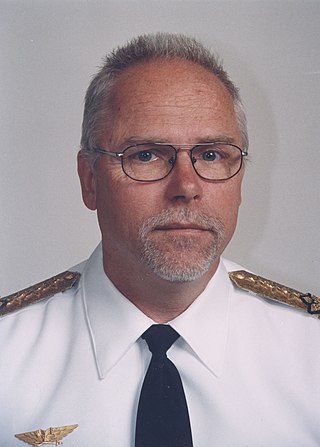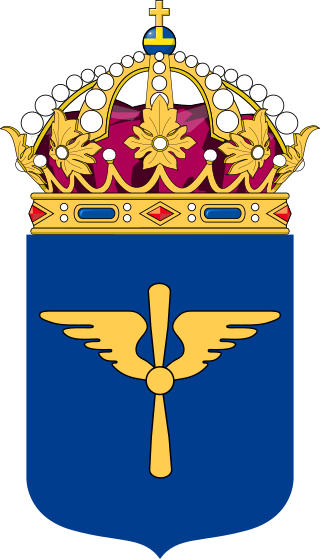History
The Air Staff was located in these red buildings at Banérgatan 62-64 from 1943 to 1981.
It was located at Lidingövägen 24 from 1981 to 1994.
When the position of the Chief of the Air Force was created in 1925, it had several officers at its disposal. The Chief of the Air Force's staff was organized in 1933 into three departments: I (organization, air forces use), II (training and personnel matters), and III (intelligence about foreign air forces, etc.). [5] The Air Staff was organized on 1 July 1936 with the following organizations: Office (1936–1964), Organization Department (1936–), Education Department (1936–), Operation Department (1936–), Operation Department (1936–1964), Aviation Department (1936–1938) and the Intelligence Department (from 1936 to 1937, when its duties were transferred to the Defence Staff). In 1937, a press officer was added; in 1942, a Press Section; in 1957, a Press Detail; and in 1964, a Press Department. [5]
In 1942, a Flight Safety and Accident Department (1942–1964) was added, then transferred to the Inspector of Flight Security (Inspektören för flygsäkerhetstjänsten) and a Signal and Weather Department (1942–1944). The latter was divided 1944 into a Signal Department (1944–1957) and a Weather Department (1944–) for the Armed Forces, a joint weather center. [5] In 1945, a Human Resources Department (1945) was added, and in 1948, a Cash Department (1948–1957). The Signal Department was 1957 renamed the Telecom Department (1957–1964). A Planning Department (1957–) and an Intelligence Department were added the same year.. [5]
In July 1964, the Air Staff was reorganized, and sections were introduced. Subordinate to the Chief was the Chief Head Office (1964–1975), the Planning Department, and the Weather Department (in 1968 transferred to the Inspector of the Weather Service). [5] Section 1 consisted of the Central Department, Signal Communications Department, Traffic Department, and the Intelligence Department (from circa 1975 the Intelligence Department (from circa 1975 the Intelligence and Security Department). Section II consisted of the Organizational Department, Education Department, Personnel Department, and the Press Department (from 1973 the Information Department) and from 1968 by an ADB (EDP) Department and from 1976 of the Land (Warfare) Inspection (1976–). [5]
The next major reorganization was in July 1981. The Air Staff was, from now on, called the Chief of the Air Force (Chefen för flygvapnet, CFV). After this reorganization, the Air Staff comprised the Chief, Planning Section FS1, System Section FS2, Human Resources Section FS3 and Education Section FS4, Organic Unit Inspection, Flight Safety Section, Weather Service Management and Administration Department. [5] The Air Staff has also included other units: the Surgeon-in-Chief of the Swedish Air Force with predecessors (1931–1969), Inspector of the Flying Safety Service (flygsäkerhetsinspektören) (1949–), Inspection of Air Surveillance (1948–1964), Inspection for Technical Services (1948–1960), Land Warfare Inspection (1956–1964), the Inspection of Base Service (1960–1964), the Inspection of the Air Force's Volunteer Activities (1961–1964), the Air Force Personnel Delegation (1959–1964), the System Inspector (1964–1981), the Inspector of Weather Service (1968–1981) and the Organic Unit Inspection (1981–). [5]
In March 1976, the Air Staff had about 370 employees. [4] Because of the reorganization in 1981, the Air Staff's workforce declined from approximately 315 to 225. [6] he last management meeting of the Air Staff occurred on 26 March 1993. [7] The Air Staff was, in connection with the Swedish Armed Forces restructuring on 1 July 1994, amalgamated into the Swedish Armed Forces Headquarters as the Air Force Command. [5]















